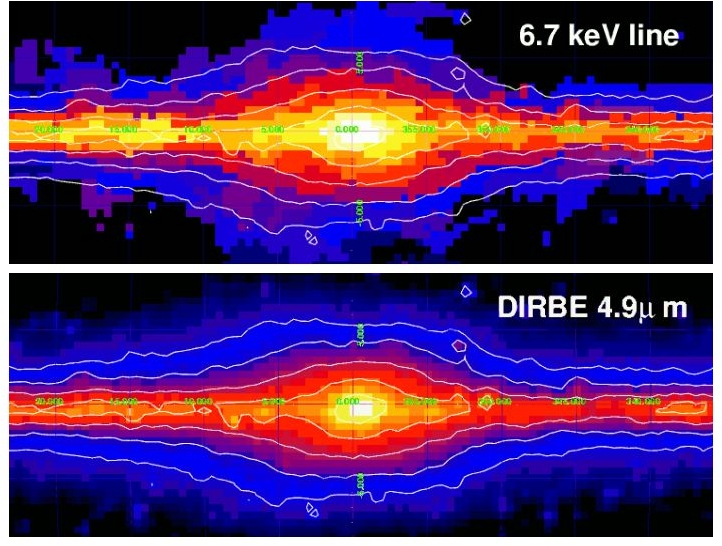
 Credit:M. Revnivtsev, S. Molkov, S. Sazonov, Max Planck Institute for Astrophysics and Space Research Institute of Russian Academy of Sciences; NASA
Credit:M. Revnivtsev, S. Molkov, S. Sazonov, Max Planck Institute for Astrophysics and Space Research Institute of Russian Academy of Sciences; NASA
Ridge of Iron
In the 1980's astronomers discovered a mystery: detection of extremely hot gas permeating the disk of the Milky Way. This gas was called the "Galactic Ridge" and is best seen in emission lines of iron atoms which have lost 25 of their 26 electrons. The origin of this hot gas was difficult to fathom, since the pressure of the gas would quickly cause it to evaporate from the Milky Way. This could mean that the hot gas is continually replaced (but how?). Or it could mean that the gas is not distributed throughout interstellar space, but tightly bound to small objects (which are themselves distributed through the Galaxy). Recently, astronomers using data from the Rossi X-ray Timing Explorer (RXTE) satellite have constructed a map of the entire Galaxy in the light of the highly stripped iron atoms, and found that the map of this emission (upper image) is very similar to the distribution of starlight as measured by the Diffuse Infrared Background Explorer (DIRBE) satellite (lower image). This similarity implies that the hot gas is bound to white dwarfs and other stars.
<
HEA Dictionary ● Archive
● Search HEAPOW
● Other Languages
● HEAPOW on Facebook
● Download all Images
● Education ● HEAD
>
Each week the HEASARC
brings you new, exciting and beautiful images from X-ray and Gamma ray
astronomy. Check back each week and be sure to check out the HEAPOW archive!
Page Author: Dr. Michael F. Corcoran
Last modified Tuesday, 27-Feb-2024 10:06:52 EST


